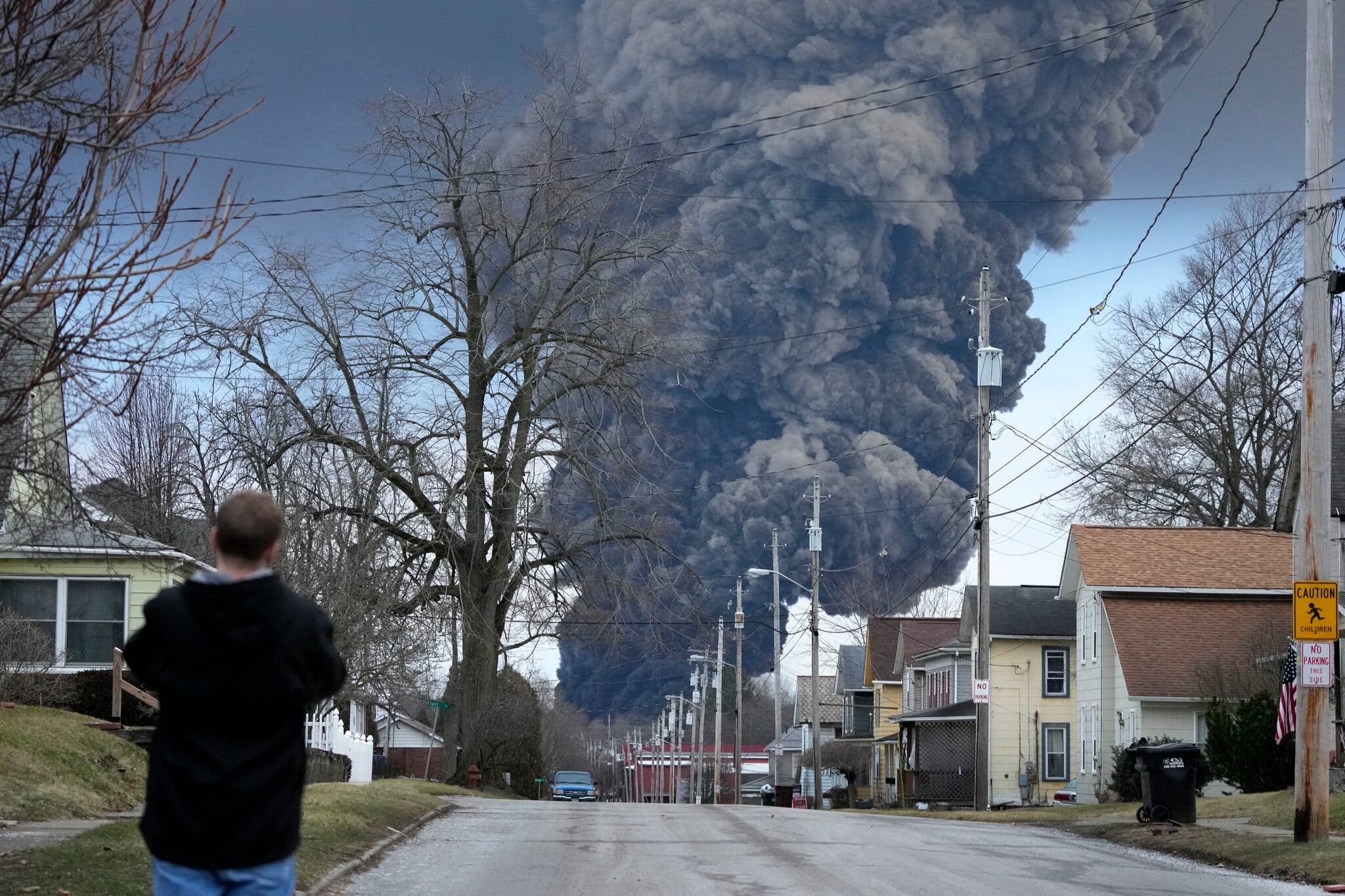Ohio Train Derailment: Lingering Toxic Chemicals In Buildings

Table of Contents
Types of Toxic Chemicals and Their Persistence
The derailment released a cocktail of hazardous materials, most notably vinyl chloride and butyl acrylate. Understanding the persistence of these chemicals is crucial to assessing the long-term risks. Vinyl chloride, a known carcinogen, is a volatile organic compound that can easily evaporate into the air. However, it can also seep into soil and groundwater, persisting for extended periods. Butyl acrylate, another hazardous chemical released, is less volatile but readily adheres to surfaces like fabrics, carpets, and building materials. This means it can slowly release into the air over time, creating a prolonged exposure risk.
- Vinyl chloride's potential to linger in soil and groundwater: This presents a long-term contamination risk, impacting drinking water sources and potentially leading to long-term health issues for residents. The extent of soil and groundwater contamination is still under investigation.
- Butyl acrylate's ability to adhere to surfaces and release slowly over time: This slow release means that even after the initial acute phase of the emergency has passed, residents could face ongoing exposure to potentially harmful levels of butyl acrylate. Cleaning and remediation efforts must consider this persistence.
- The potential for chemical reactions and the formation of new, potentially harmful compounds: The interaction of different chemicals released during the derailment could lead to the formation of new, unknown compounds with potentially even more harmful properties. Further research is needed to fully understand these secondary effects.
Health Risks Associated with Lingering Chemicals
Exposure to the lingering toxic chemicals poses significant short-term and long-term health risks to residents and workers in the affected areas. Short-term effects can include respiratory problems such as asthma, bronchitis, and eye irritation. Long-term exposure, however, presents a much more serious concern.
- Increased risk of respiratory illnesses like asthma and bronchitis: The volatile nature of some of the released chemicals means that respiratory problems could become widespread, particularly among children and the elderly.
- Potential for long-term neurological damage: Some of the chemicals released are known neurotoxins, meaning they can cause damage to the nervous system, potentially leading to long-term cognitive and neurological impairment.
- Increased cancer risk due to carcinogenic properties of certain chemicals: Vinyl chloride, for instance, is a known human carcinogen, and prolonged exposure significantly increases the risk of various cancers. Long-term health monitoring of residents is vital to assess the extent of this risk.
Contamination in Homes and Businesses
Contamination can occur through various pathways, including airborne particles settling on surfaces, contaminated water entering homes, and direct contact with contaminated soil. Detecting and removing these chemicals from buildings presents a significant challenge.
- Air quality testing and remediation strategies: Comprehensive air quality testing is essential to identify the presence and concentration of lingering chemicals. Remediation may involve specialized cleaning, air filtration systems, or even demolition in severe cases.
- Water testing and purification methods: Testing water sources for contamination is crucial to ensure the safety of drinking water. Purification methods may include filtration systems, reverse osmosis, and other advanced treatments.
- Decontamination procedures for affected structures: Thorough decontamination procedures may be necessary, involving specialized cleaning techniques, removal of contaminated materials, and potentially structural modifications.
Government Response and Community Concerns
The government's response to the contamination issue has been a subject of significant debate and scrutiny. While various agencies are involved in the cleanup and investigation, concerns remain about the adequacy and speed of the response. Residents and businesses in the affected areas have expressed deep anxieties about their health, their property values, and the long-term consequences of the derailment.
- Governmental agencies involved in cleanup and investigation: The EPA, along with state and local agencies, are responsible for overseeing the cleanup efforts and investigating the extent of contamination.
- Community organizing and advocacy efforts: Residents have organized to demand greater transparency, more comprehensive cleanup efforts, and better access to healthcare and support services.
- Access to healthcare and support services for affected individuals: Ensuring access to adequate healthcare, including long-term monitoring and treatment for potential health issues, is paramount.
Conclusion:
The Ohio train derailment's impact extends far beyond the initial disaster. The lingering toxic chemicals pose a significant, ongoing threat to the health and well-being of the community. Thorough investigation, comprehensive remediation efforts, and long-term health monitoring are crucial to mitigate the long-term consequences of these lingering toxic chemicals. Concerned citizens should stay informed about the latest developments and advocate for their health and safety. Understanding the potential dangers of lingering toxic chemicals from this event is the first step towards ensuring a safer future. Don't hesitate to contact your local health authorities for more information about lingering toxic chemicals in your area and available resources.

Featured Posts
-
 Nestor Cortes Strong Start A Rebound Performance Against Cincinnati
Apr 23, 2025
Nestor Cortes Strong Start A Rebound Performance Against Cincinnati
Apr 23, 2025 -
 France Faces Early Elections Macrons Gamble
Apr 23, 2025
France Faces Early Elections Macrons Gamble
Apr 23, 2025 -
 Federal And Non Federal Holidays In The Us 2025 Calendar
Apr 23, 2025
Federal And Non Federal Holidays In The Us 2025 Calendar
Apr 23, 2025 -
 Carte Blanche L Uvre De Dominique Carlach Exploree
Apr 23, 2025
Carte Blanche L Uvre De Dominique Carlach Exploree
Apr 23, 2025 -
 Millions Made From Exec Office365 Account Hacks Fbi Investigation
Apr 23, 2025
Millions Made From Exec Office365 Account Hacks Fbi Investigation
Apr 23, 2025
